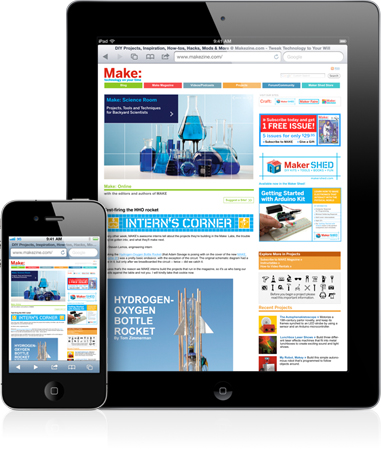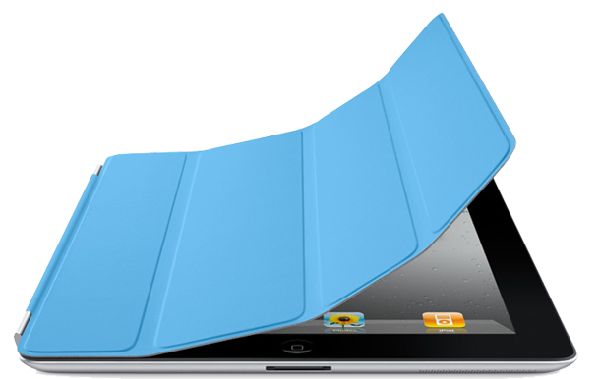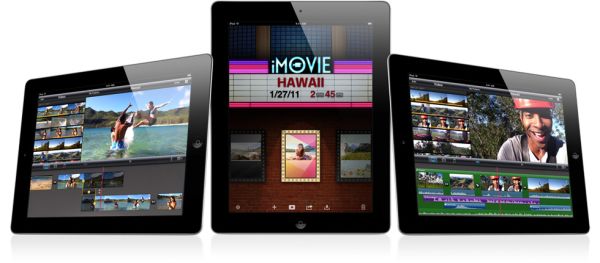Today, Steve Jobs took a sabbatical from his sabbatical to hop up on stage and tell us all about the iPad 2, the next revision of Apple’s wildly popular tablet PC.
The announcement concerned both hardware and software – the iPad 2 is coming to the US on March 11, and with it will come the iOS 4.3 update, iMovie for iPad, and GarageBand for iPad. It will launch at the same capacities and price points as its predecessor, will come in both black and white, and launches internationally on March 25.
The iPad 2 - More of the Same

The iPad has had, for all intents and purposes, the tablet market to itself for most of the past year. That’s all set to change in 2011, based on the plethora of Android and Windows tablets we saw at CES, so the iPad 2 must be not only a solid extension of the original product’s strengths, but also a worthy competitor to the first wave of products from Google, Microsoft and the rest.
For convenience’s sake, I’ll be comparing the new iPad’s specs to both the old iPad and to the Motorola Xoom, which we reviewed last week. While the Xoom certainly doesn’t represent all of the Android/Honeycomb tablets that will come to market in the next few months, it does represent Google’s reference design for Honeycomb, and as such I feel safe considering it the standard (or perhaps the ideal) hardware configuration for Google’s new tablet OS.
| iPad | iPad 2 | Motorola Xoom | |
| Processor | 1GHz Apple A4 | 1GHz Apple A5 | 1GHz NVIDIA Tegra 2 |
| Memory | 256MB | Unknown | 1GB |
| Storage | 16GB, 32GB, and 64GB | 16GB, 32GB, and 64GB | 32GB + microSD card |
| Display | 9.7-inch 1024 x 768 | 9.7-inch 1024 x 768 | 10.1-inch 1280 x 800 |
| Dimensions | 242.8mm x 189.7mm x 13.4mm | 241.2mm x 185.7 mm x 8.8 mm | 249.1mm x 167.8mm x 12.9mm |
| Weight | 1.6 lbs (3G model) 1.5 lbs (wi-fi model) | 1.34 lbs (3G model) 1.33 lbs (wi-fi model) | 1.6 lbs |
Apple took this opportunity to move from the Apple A4 processor it used in the iPhone 4 and original iPad, which combined a Cortex-A8 processor with a PowerVR SGX 535 GPU. The A4 is very closely related to the processors used in the iPhone 3GS, so that should give you a frame of reference for how long we've been waiting for a true architecture bump.
The new A5 processor is a dual-core affair running at the same speed as the A4 in the original iPad. Just as Apple was coy about mentioning the A4 being powered by an ARM Cortex A8, it's quite possible that the A5 is powered by two ARM Cortex A9 cores. Thankfully, the increased performance doesn't come at the cost of decreased battery life - the iPad 2 is rated at about 10 hours of battery life, same as the original iPad.
The new iPad's graphical capabilities should be impressive, though; Apple claims that it is up to nine times as fast as the original iPad. The improvement in GPU performance is likely due to the rumored PowerVR SGX 543 that's inside the A5. We'll need to wait until we have the device in hand to separate the actual speed from the on-paper speed, but if this claim holds up we should be seeing games and apps that look an order of magnitude better on the new iPad.
System memory is also a bit of a wildcard at this point, and my best guess varies based on the precedent I use. The original iPad has 256MB of system memory, which was the same amount as the then-current iPhone 3GS. If Apple follows this pattern, then the new iPad should have the 512MB of system memory that the iPhone 4 has. However, if Apple is more interested in staying abreast of Android, the new iPad will have the 1GB of system memory encapsulated in the Xoom. Either way, we'll probably need to wait until we have the device in hand to figure this out, since it isn't mentioned on Apple's otherwise exhaustive spec sheet.
The iPad 2 comes in both wi-fi only and 3G flavors - separate 3G iPads will be available on both the Verizon and AT&T networks from day one. It remains to be seen whether the iPhone 5 will be a universally compatible device, but based on the iPad 2 the next iPhone may continue to come in two slightly different flavors. Just as before, Assisted-GPS is only available on the 3G versions of the iPad 2.
Moving from the inside to the outside, the new iPad also receives the front (VGA) and rear-mounted (720p) FaceTime cameras that have become nearly ubiquitous in Apple’s products since FaceTime’s introduction in the iPhone 4 - the original iPad had a space inside the case where a camera would fit, but manufacturing troubles led the company to leave the camera out.
Apple delivers all of this new stuff in a package that is slighlty lighter and significantly thinner than the previous iPad at the same price points, which I don't think anyone can complain about, and it comes in both black and white varieties.
Moving into the Land of Accessories, Apple showcased two things today. The first was a new case design for the tablet - using magnets built into both the iPad's chassis and the case's hinge, it manages to protect the device's screen and serve as a stand without adding a lot of additonal bulk to the tablet.
The previous iPad case was a foamy, bulky thing that made the tablet more unwieldy while also restricting access to its data port and obscuring its pretty exterior. The new case looks to protect the tablet's most vulnerable asset while also maintaining the device's aesthetics. The new cases will run $39 for a polyurethane cover, and $69 for a leather cover.
Also demoed was an HDMI adapter, which promises to output any app at 1080p resolutions with a minimum of setup and fuss. You'll pay $39 for the privilege - it's up to you to decide whether this is useful to you.
iOS 4.3 - iOS 4 redux
Those of you hoping to get some information on iOS 5 today are out of luck - you'll probably have to wait for the iPhone 5 announcement before you see the true next-generation iOS. iOS 4.3, which requires the newly released iTunes 10.2, adds some new features to the now-familiar iOS 4 without changing much else.
The first thing you should know about the next iOS update is the list of supported models - Apple lists, in additon to the iPad 2, the original iPad, the iPhone 3GS and 4, and the third- and fourth-generation iPod Touch. Missing from this list are the iPhone 3G and the second-generation iPod Touch, which won't be supported by any iOS update past 4.2.1. The CDMA iPhone 4 is also excluded from the 4.3 list, although Apple hasn't provided any reason as to why it's not included.
This information might sting a bit for owners of these devices, but it certainly isn't surprising. The iPhone 3G missed out on many of iOS 4's banner features - multitasking and home screen wallpapers being chief among these - and performance has been notoriously poor on these older devices, though the 4.1 and 4.2 releases did improve the situation to some degree. It's too bad that Apple can't deliver new software updates to all of its users indefinitely, but it's understandable that they don't want to hamper newer devices' feature sets in order to maintain support for devices with 128MB of RAM and sub-500MHz processors.
Now that you know what devices won't be supported, let's talk about the features that supported devices should see when the new update hits on March 11th.

All supported devices should see a tidy increase in JavaScript performance in Safari - Apple claims that its new Nitro JavaScript engine is twice as fast as the old one. It's not a consolation for those hoping for Honeycomb's true tabbed browser, but it should improve the experience for anyone already used to Web browsing in iOS.
AT&T iPhone 4 users will also get the Personal Hotspot feature included on the new Verizon iPhone - contingent on AT&T's support for the feature, they'll be able to share their phone's 3G data connection with up to five wi-fi enabled devices. AT&T's GSM/UMTS network should allow this feature to work even if the phone is being used to make calls, which will be a nice feature for the AT&T faithful.
Next up, users who were discouraged to see the iPad's orientation lock become a practically useless mute switch at the onset of iOS 4 will now have the option to make it an orientation lock once again. There's not much else to say about this one.
The last feature I want to talk about is the one that I'm the most excited about, personally - people will finally be able to stream their iTunes libraries to their iOS devices over their wi-fi networks, just as they've been able to share their libraries with other iTunes users for years now. It may not matter much to users with higher-capacity devices, but this forehead-slappingly simple feature is going to be awesome for me - I can finally access all of the music from my 40+ GB iTunes library on my 16GB iPhone while I'm wandering around the house, and I couldn't be happier about it.
iOS 4.3 further improves iOS 4, but it doesn't really address the underlying problem with iOS - it's becoming a bit dated, and that some of Honeycomb's interface improvements make Android tablets more usable for heavy multitaskers without negating the elegance of an all-touch interface. This is understandable, for now - many Apple users are perfectly happy with iOS 4, so why rock the boat? - but I'd like to see some more drastic changes in iOS 5, especially given how multitasking-oriented the new hardware is.
GarageBand and iMovie - iLife for iPad
One of the most common criticisms of the iPad is that it is designed for media consumption rather than creation - if you want to look at web pages or photos or movies, it's great, but if you're in the business of making any of those things, it leaves something to be desired.
I believe that this problem is endemic to tablets - any device that is mostly screen is going to lose to something that accepts more versatile input devices - but Apple is moving to remedy some of those complaints with new apps based on its iLife suite.
iMovie appears to be a relatively full-featured movie editor that can work with movies stored on your iPad or with movies you capture with the device's built-in camera.
iMovie for iPad supports exporting to YouTube and to iTunes, among other services, and gives you access to a range of transitions and sound effects, to boot. Expect it to deliver a good amount of the Mac version of iMovie's functionality, though you certainly won't be able to replace your MacBook with a tablet just yet.
Most of these statements also apply to the iPad version of GarageBand, a simplified version of the iLife app. The iPad app can record up to 8-tracks from recorded audio, loops, or from the app's simulated instruments (touch versions of a drumset, keyboard, guitar and bass guitar are all represented). As with iMovie, serious users will still want to use the desktop version of GarageBand, but the iOS app goes some way toward making the iPad a more usable prodution device.
To further overuse a ridiculously overused phrase, the new iPad is evolutionary rather than revolutionary. The internals get what should be a nice bump, but the screen size and resolution remains the same, and we aren't going to see any major changes in the new tablet's interface or functionality. For the most part, it can do everything the original iPad could, just faster. Current iPad users who aren't bothered by the first-gen device's lack of a camera won't likely find a must-have reason to upgrade, especially since the first iPad will likely be supported by iOS 5 and beyond.
At the same time, users who found themselves unimpressed by the original iPad are unlikely to be won over by the iPad 2. A speed bump and a pair of cameras aren't enough to make the iPad more like a notebook if that's what you want.
However, the new iPad does attempt to further blur the line between full computers and tablets, a line that is only going to get blurrier as more Honeycomb tablets invade the market. The iPad still lacks a dedicated keyboard, which will probably always hamper its utility as a content creation device for me, but iMovie and GarageBand join the already existing iWork apps as decent tablet versions of desktop programs.
The iPad continues to be a good purveyor of the Apple Experience, a middle step between the iPhone and iPod Touch at the low-end and the MacBook Air or MacBook Pro at the high-end. We're missing a few performance and hardware details, and iOS is beginning to look a bit dated in comparison to Honeycomb, but none of these issues will likely stop the new iPad from being just as hot a seller as the previous version.



0 comments:
Post a Comment